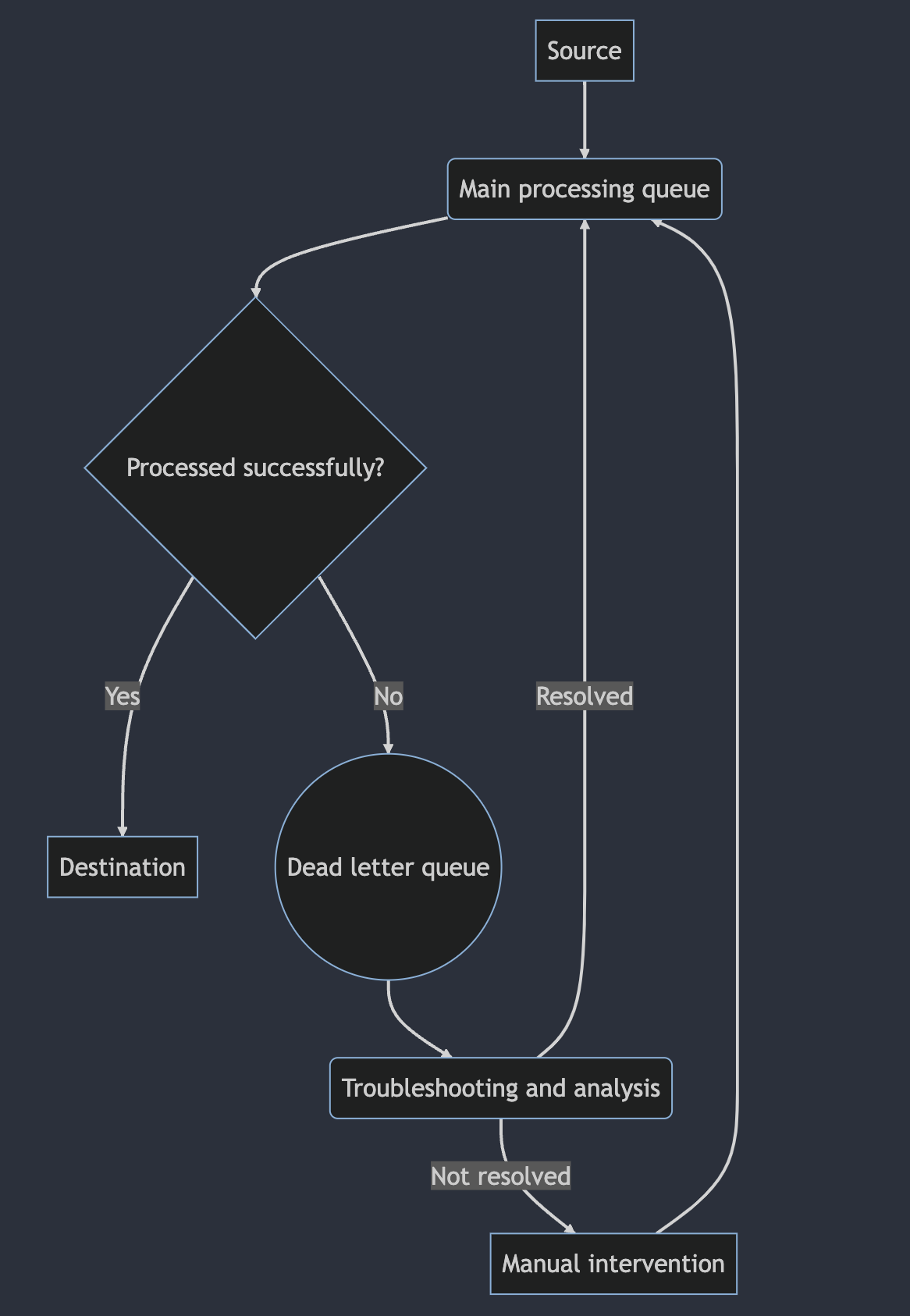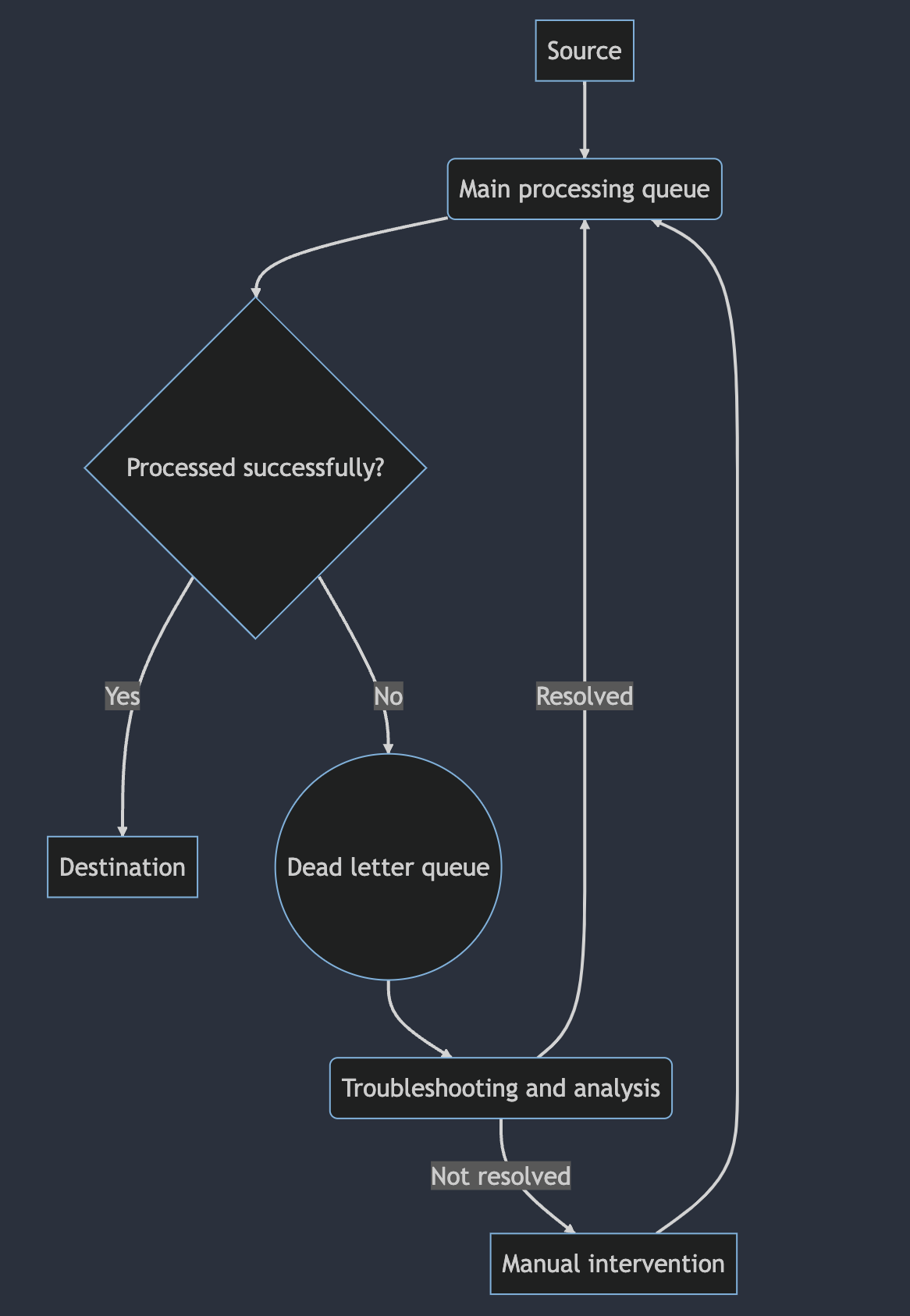📨📩📮 Dead Letter Queues 📮📩📨

What They Are and When to Use Them
Dead Letter Queues (DLQs) are a vital part of any message-oriented middleware system. They provide a mechanism for handling messages that cannot be processed by the intended recipient and are an essential component of fault-tolerant and reliable systems.
In this article, we will explore the basics of DLQs, their use cases, and the tradeoffs associated with using them.
🔍 What are Dead Letter Queues?
A Dead Letter Queue (DLQ) is a queue that holds messages that could not be delivered to their intended recipients due to various reasons such as incorrect message formatting, network errors, or system failures. When a message cannot be delivered to its intended recipient, it is placed in the DLQ for further processing.
✅ This is a sneak peek of my Core Data Engineering newsletter, you can sign up for more here: https://www.arecadata.com/#/portal/
✅ Follow Daniel Palma for more content like this!
🤔 Why use Dead Letter Queues?
DLQs provide several benefits to message-oriented middleware systems. Firstly, they enable fault-tolerant and reliable systems by providing a mechanism for handling messages that cannot be delivered. Without DLQs, these messages would simply be lost, potentially leading to data loss and other serious issues.
Secondly, DLQs enable better system visibility and monitoring. By examining the contents of a DLQ, system administrators can identify common patterns of errors or issues and take corrective actions.
💡 When to use Dead Letter Queues?
Dead Letter Queues (DLQs) are especially useful in mission-critical systems where data integrity is paramount. These queues are also helpful in systems that require high levels of fault tolerance and reliability, such as financial, logistics, or healthcare systems.
Furthermore, DLQs can be useful in systems that process large volumes of messages.
🚫 When not to use Dead Letter Queues?
Dead Letter Queues may not be necessary for systems that do not require high levels of reliability or fault tolerance. In these cases, the additional complexity and overhead of implementing a DLQ may need to be justified.

🤝 Tradeoffs of using Dead Letter Queues
The use of Dead Letter Queues involves some tradeoffs. On the one hand, DLQs can improve system reliability and fault tolerance, while enabling better monitoring and visibility. On the other hand, DLQs can add complexity and overhead to a system, and may not be necessary in all cases.
🔚 Conclusion
Dead Letter Queues are a powerful tool for ensuring message integrity and system reliability in message-oriented middleware systems. They enable fault tolerance, improve monitoring and visibility, and can be essential in mission-critical systems. However, their use must be carefully considered, considering the specific needs and requirements of the system in question.
#data #dataengineering #coredataengineering #analytics #streamprocessing #streamingdata
Member discussion